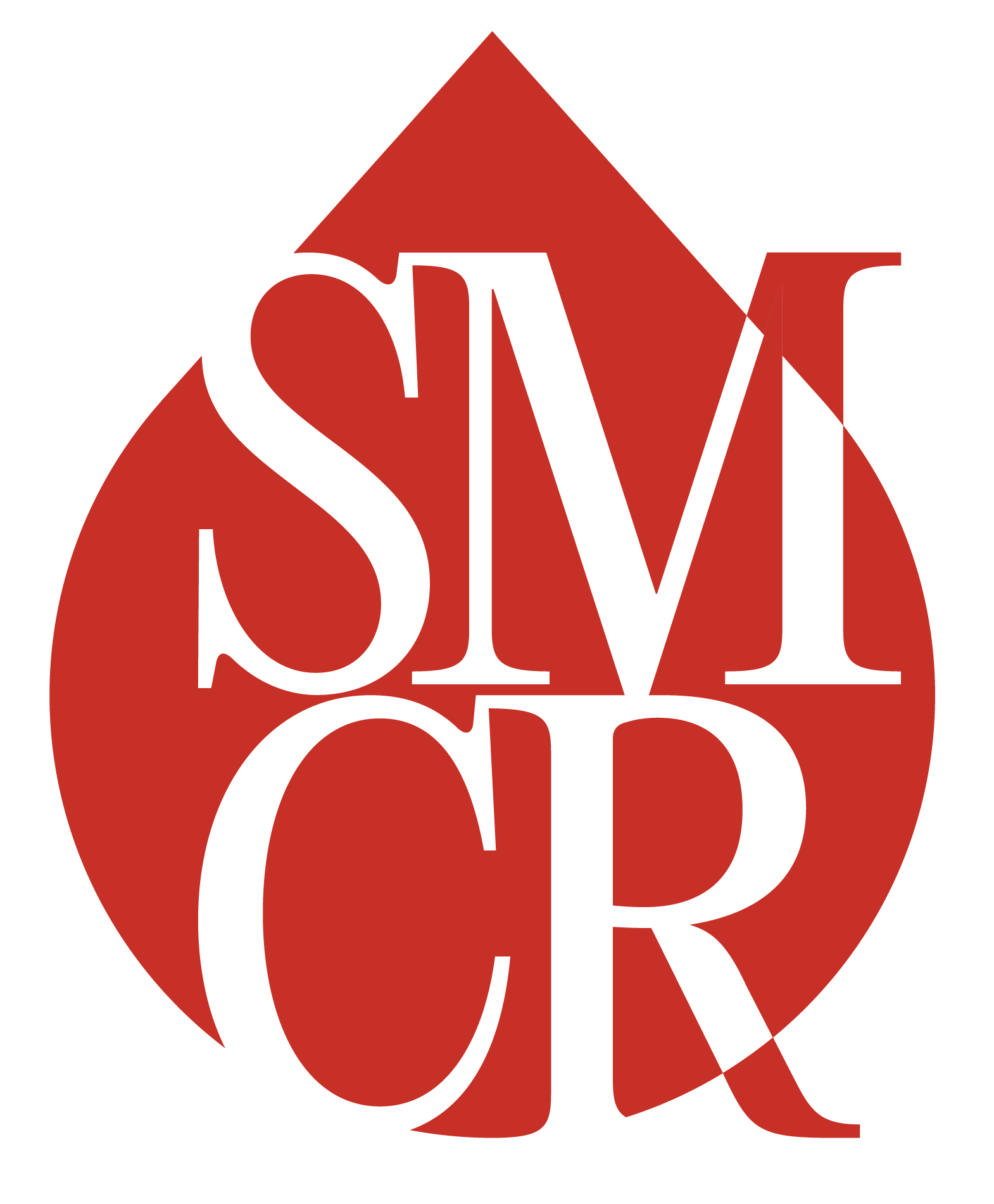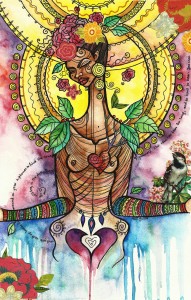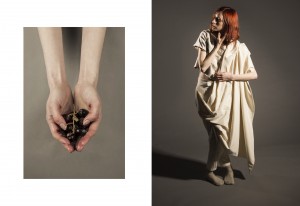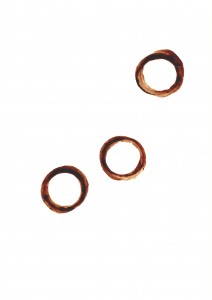Danielle Boodoo-Fortune
I think of my art as an exploration of the under-layers of women’s experiences, the intimate innerscapes that can only be expressed in the visual language of symbol. My work, primarily done in watercolour, ink and collage, and often including lines of my writing, is vibrant, half-wild, illustrative and poetic. It is rooted deeply in the natural landscape of the Caribbean, and connects personal, everyday experiences with the divine, and with myth and memory.
The writer Gloria Andalzua says “I want the freedom to carve and chisel my own face, to staunch the bleeding with ashes, to fashion my own gods out of my entrails.” Through my paintings, I am building my own map of myth and memory, my own god(desses), new ways of understanding myself as a young Caribbean woman of colour.
I believe that my work relates to this call for art in its intimacy and focus on the complexity of personal experience, particularly as it relates to how we experience our own (female) bodies.
Tory Leeming
Inspired by the history around societal views of menstruation and the female body, ‘Menses’ is a four look, fashion collection that references the abstract views of ancient philosophers and practices. The Greek philosopher, Aristotle, who himself saw women’s menstrual cycle as the product of insufficiently produced sperm, believed menstruation made women the ‘lesser’ sex, while Roman philosopher Pliny the Elder described menstrual blood as one of the most dangerous fluids in existence (Hiltmann, G. 2005).
In the Greek myth of Medusa, the gorgon whose look could turn a man to stone, a horrifying woman with a crawling, bloody, and repulsive head of snakes was described by ancient folklore not only to mark the danger of a menstrual woman, but also to demonise menstruation itself (Mulvey-Roberts, M. 2005). These ‘menstrual taboos’ created through history have not only distorted the current day views around a woman’s body, but have also prevented both the comfort of body literacy and the advancement of all women’s overall health.
Through the relation of fabrics to the flesh tones of menstruation and anatomy, and the links of nature to our own bodies with the use of plant-based dyes, ‘Menses’ prompts us to address the fear of menstruation applied by ancestral misunderstanding, creating a calm atmosphere that welcomes the discussion of our bodies, from our own perspectives.
Giuliana Serena
What does it mean to have “blood on one’s hands?” Generally, the idiom is used to implicate or accuse a person of being either personally or tangentially responsible for the death or injury of another. This comes from the obvious fact that often when someone is killed, in close contact, personally, their blood can end up on their assailant’s hands in one way or another.
And yet, all around the world, far more women will invariably have blood on their hands, than those whose hands are bloodied by aggression Each time a woman changes a pad, tampon, she may get blood on her hands, and certainly if she is changing a sponge or cup or applicator-less tampon, and when washing reusable pads, sponges, cups, and undergarments.
In this way, “having blood on one’s hands” is a perfectly normal experience for the majority of women.
However, our language reflects our great fear of blood. The way we speak about blood and use blood-related imagery is most often in terms of violence, death, and disgust. How could this not have a negative influence on those for whom being bloody, and coming into close contact with this blood, is a fact of life?
I am a woman. I experience a menstrual cycle. I bleed. To occasionally have blood on my hands is a fact of life which I do not begrudge. To accept this, and appreciate my cycle as a whole, my bleeding especially, is to accept and appreciate myself. Bloody and messy and human and all.
For more information, visit www.wideningthecycle.com. For questions, please email the curator and exhibit planner, Jen Lewis, at info [at] wideningthecycle [dot] com.




